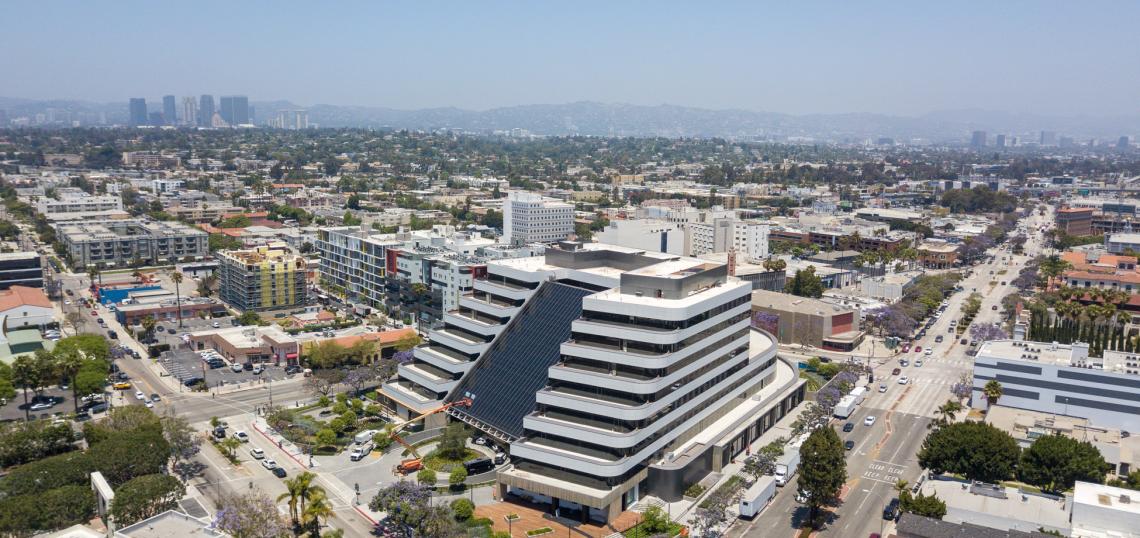Citing runaway increases in the cost of housing, Culver City moved last year to enact a temporary rent stabilization ordinance. Now, officials from the "Heart of Screenland," will grapple with whether or not to make those protections permanent.
With the temporary ordinance scheduled to expire in less than three months, the Culver City Council is scheduled to discuss the potential components of a permanent rent stabilization ordinance at its meeting on June 11. This would build on protections from the current legislation, which include:
- A 3% rent increase cap retroactive to June 24, 2019;
- Just cause and no fault eviction provisions;
- A process for landlords to petition for relief from moratorium in certain circumstances; and
- Relocation assistance for tenants.
According to a staff report to the City Council, additional policies that could be considered for the permanent ordinance include:
- Means-tested relocation assistance - long-term, low-income, and other vulnerable tenant groups are eligible for higher amounts of relocation assistance in no fault evictions.
- Remodeling and renovation as an allowable no fault eviction - this is typically allowable, although an evicted tenant may have a right to return or be allowed to sue for civil remedies if no renovation occurs. Jurisdictions may place time frames for the completion of construction and define a substantial remodel with minimum dollar amounts.
- Voluntary buy-out - where tenants voluntarily move out in exchange for an agreed-upon amount of financial compensation from their landlord. Other Los Angeles County jurisdictions allow this practice, according to a study commissioned by Culver City.
- New Adult Tenant in an Occupied Unit - potentially requiring landlord approval of all unrelated new tenants, deferring to the lease agreement, or potentially allowing rent increases for new adult tenants. The City of Los Angeles allows for up to a 10 percent increase for new adults and minor dependent children after the first.
- 12-month probationary period - permitting the cessation of a lease agreement under a no fault eviction at the end of the 12-month period, which is permitted under state law.
- Cost-recovery pass-through options - what (if any) amount of property improvement costs can be charged to the tenant by the landlord.
Unlike the temporary ordinance, which was adopted in August 2019, the permanent ordinance would follow the enaction of AB 1482 - the statewide rent control law which took effect in January 2020. In addition to providing new eviction protections for tenants, the legislation also established annual caps on rent increases - though the limits are less stringent than those of Culver City's temporary ordinance, as well as other laws adopted by Los Angeles County jurisdictions.
The potential components of the permanent ordinance are built upon a study published by BAE Urban Economics, which includes a survey of rent control ordinances in Beverly Hills, Los Angeles, Los Angeles County, Santa Monica, and West Hollywood, as well as interviews with Culver City landlords and tenants.
The study, was completed earlier this year, found that there were approximately 7,500 renter-occupied housing units in Culver City between 2014 and 2018, roughly 40 percent of whom lived in single-family homes, duplexes, triplexes, and fourplexes. Under the Costa-Hawkins Rental Housing Act, approximately 2,000 of these renter-occupied units are exempt from rent control ordinances.
Renter households, which comprise roughly 48 percent of the total households in Culver City, are generally smaller in size and less likely to include children when compared to Los Angeles County as a whole. Roughly one third of these renter households have an annual income of $100,000 or more - nearly double the Countywide average.
While Culver City has a disproportionately high percentage of higher-income renters, approximately 43 percent of these households are cost-burdened - meaning they spend more than 30 percent of their annual income on rent. Of those approximately 3,500 cost-burdened households, approximately half spend more than 50 percent of their income on rent.
According to CoStar, the average monthly rent in Culver City increased by nearly 45 percent over the past decade, rising from $1,785 per month in 2011 to $2,580 in 2020. Multifamily vacancy rates have remained steady during that period - ranging from 3 to 5 percent.
Culver City, which has a population of approximately 39,000, was expected to add 185 homes (including 108 affordable units) between 2013 and 2018 based on SCAG's Regional Housing Needs Assessment. To date, less than 50 percent of the required number of below market-rate units have been built.
- Culver City Begins Drafting Rent Stabilization Ordinance (Urbanize LA)






